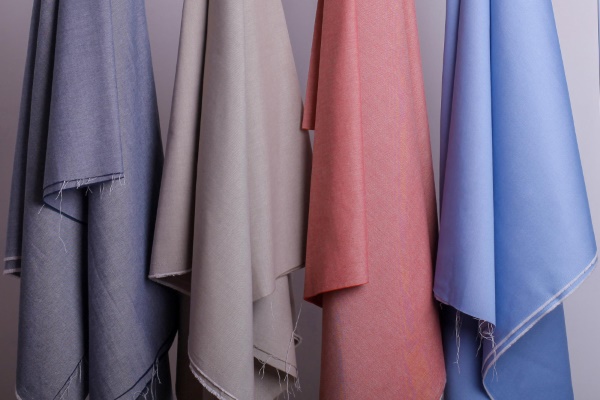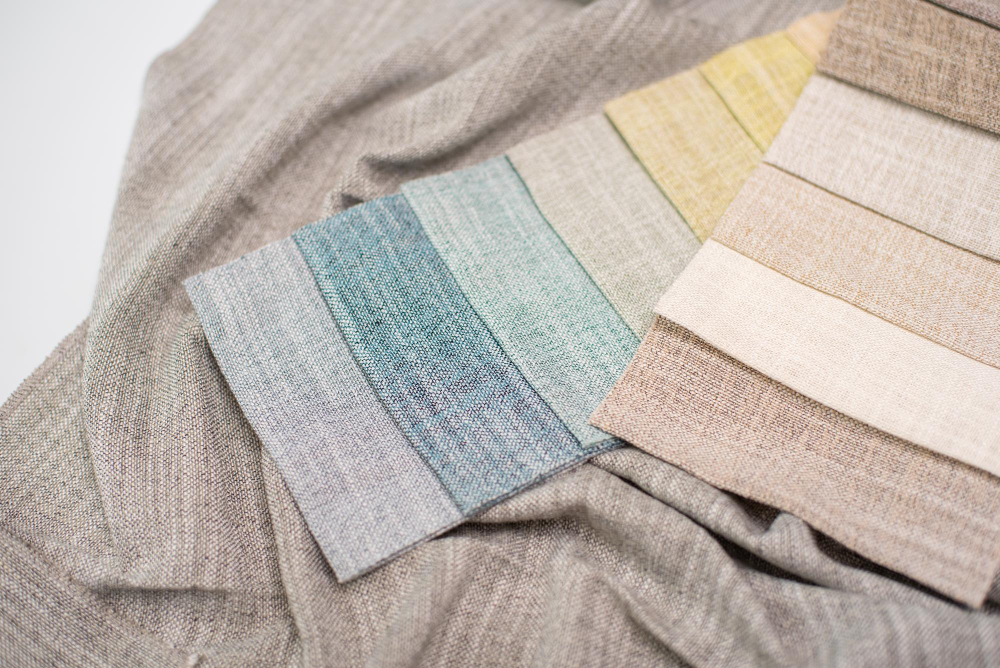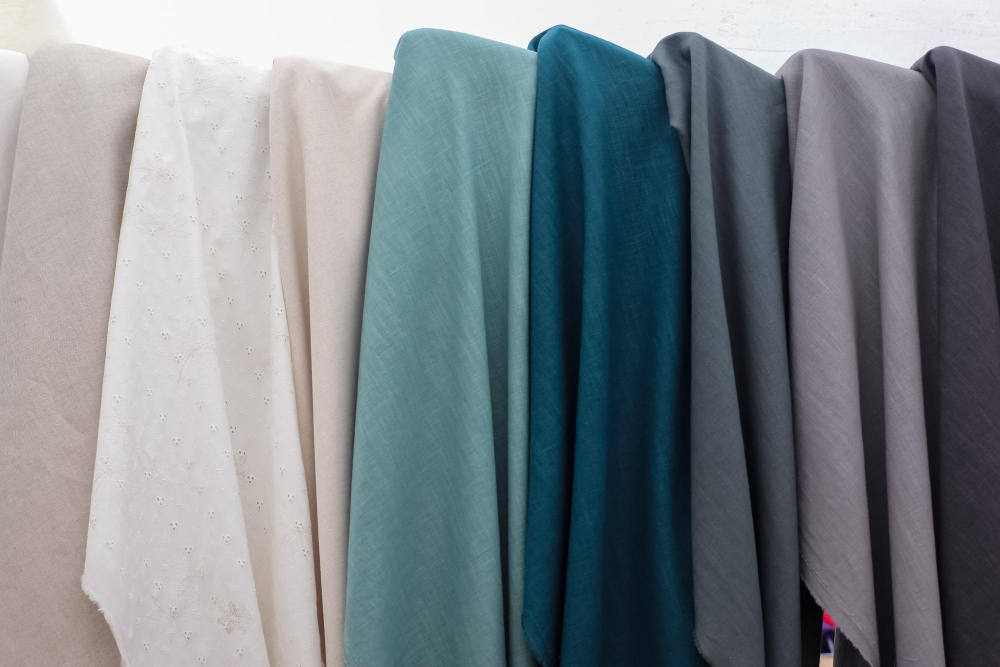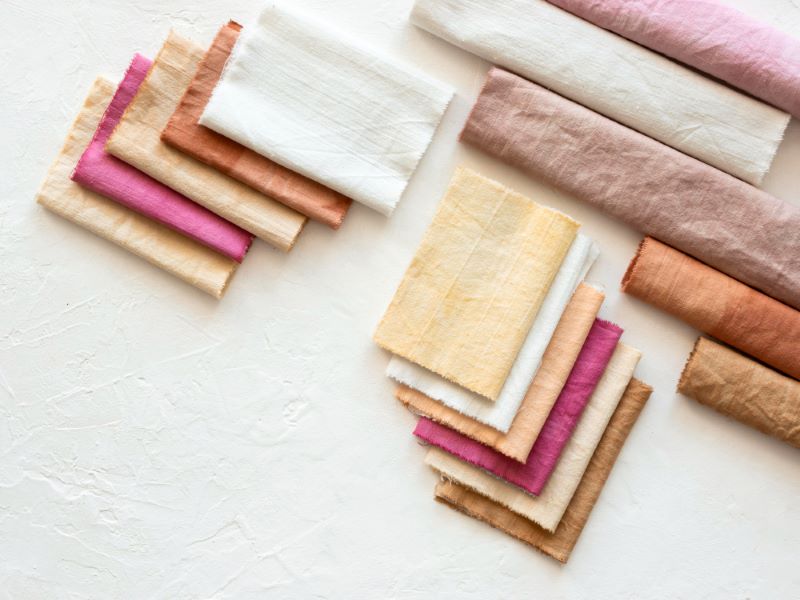Cotton has been a wardrobe staple for centuries, but pure cotton isn’t always the best choice for every need. Cotton fabric blends combine the natural comfort of cotton with other fibers to create textiles that perform better, last longer, and feel more luxurious.
Whether you’re a fashion designer sourcing materials for your next collection or a home decorator searching for upholstery that withstands daily wear, understanding cotton blends helps you make smarter purchasing decisions. The right blend can give you the softness of cotton with added strength, wrinkle resistance, or moisture-wicking properties.
This guide breaks down the most popular cotton fabric blends, explaining which ones deliver luxury, which prioritize durability, and how to choose the right option when you buy fabric online.
Why Cotton Blends Are Gaining Popularity
Pure cotton offers breathability and softness, but it comes with limitations. It wrinkles easily, shrinks after washing, and can lose shape over time. Cotton blends address these issues by combining cotton with synthetic or natural fibers.
Blending cotton with polyester, for example, creates a fabric that resists wrinkles and maintains its shape wash after wash. Mix cotton with linen, and you get a textile that’s both breathable and structured. These combinations make cotton fabric more versatile for different applications.
Key benefits of cotton blends include:
- Enhanced durability: Blended fibers resist wear and tear better than pure cotton
- Improved comfort: Many blends maintain cotton’s softness while adding stretch or moisture management
- Cost-effectiveness: Blends often cost less than premium pure cotton while delivering comparable quality
- Easy care: Most cotton fabric blends require less ironing and maintain their appearance longer
Fashion brands and textile manufacturers now prefer cotton blends for both everyday wear and high-end products. The textile industry has refined blending techniques to create fabrics that compete with luxury materials at more accessible price points.

Cotton Blends for a Luxury Feel
Some cotton fabric blends focus on delivering premium texture and appearance. These options suit brands that want to offer high-quality products without the extreme cost of pure luxury fibers.
Supima Cotton Blends
Supima cotton comes from American Pima cotton, known for its extra-long staple fibers. When blended with small amounts of elastane or modal, Supima cotton creates fabrics with superior softness and a subtle sheen.
Supima blends work well for high-end apparel like dress shirts, premium t-shirts, and luxury bedding. The long fibers create a smooth surface that resists pilling and maintains its appearance through repeated washing. When you buy fabric online, look for Supima content of at least 80% to ensure you’re getting true quality.
These blends typically cost more than standard cotton fabric, but they offer better color retention and a noticeably softer hand feel. Fashion labels targeting premium markets often choose Supima blends for their signature pieces.
Egyptian Cotton Blends
Egyptian cotton ranks among the most sought-after natural fibers, prized for its exceptional length and fineness. Pure Egyptian cotton can be expensive, but blends containing 60-70% Egyptian cotton with modal or bamboo rayon deliver similar luxury at reduced cost.
Egyptian cotton blends excel in home textiles like sheets, towels, and upholstery. The long fibers create a fabric that feels substantial yet silky. The addition of modal or bamboo enhances moisture absorption, making these blends practical for items that need frequent washing.
When sourcing Egyptian cotton fabric, verify the blend ratio. Some manufacturers use minimal Egyptian cotton and market products as premium when they’re mostly standard cotton. Reputable suppliers like Fabriclore provide detailed fiber content information, helping you make informed choices when you buy fabric online.
Cotton-Silk Blends
Blending cotton with silk creates a fabric that combines cotton’s practicality with silk’s lustrous appearance. These blends typically contain 60-80% cotton with the remainder being silk or silk-like fibers such as Tencel.
Cotton-silk blends work beautifully for occasion wear, scarves, and lightweight summer clothing. The silk content adds drape and sheen without the high maintenance requirements of pure silk. These fabrics can usually be machine washed on gentle cycles, unlike delicate pure silk.
The cotton base provides structure while silk contributes fluidity. This combination makes cotton-silk blends ideal for garments that need to look polished but remain comfortable for all-day wear.
Cotton Blends for Maximum Durability

When longevity matters more than luxury aesthetics, certain cotton fabric blends outperform others. These options suit workwear, children’s clothing, and items subjected to frequent use and washing.
Cotton-Polyester Blends
Cotton-polyester represents the most common and practical cotton fabric blend. Typical ratios range from 50/50 to 65/35 (cotton/polyester), with each ratio offering different benefits.
Higher polyester content increases wrinkle resistance and shape retention. A 50/50 blend dries quickly and maintains crisp lines, making it popular for uniforms and casual business attire. The 65/35 ratio leans toward cotton’s comfort while still providing durability improvements.
Cotton-polyester blends cost less than many alternatives, making them accessible for large-scale production. These fabrics withstand industrial laundering, resist fading, and maintain appearance standards across hundreds of wash cycles.
When you buy fabric online for commercial applications, cotton-polyester blends often provide the best value. They perform consistently, require minimal special care, and meet most quality standards at competitive prices.
Cotton-Linen Blends
Linen adds structure and breathability to cotton fabric. Common blends contain 55% linen and 45% cotton, though ratios vary based on intended use.
Cotton-linen blends offer excellent airflow, making them perfect for warm-weather clothing. The linen component adds texture and a slightly crisp hand feel, while cotton softens the fabric and reduces wrinkling compared to pure linen.
These blends suit casual wear, home textiles, and summer collections. They develop a pleasant, lived-in appearance over time rather than looking worn out. The natural fibers breathe well, wick moisture, and become softer with washing.
Fashion brands focused on natural, sustainable materials often choose cotton-linen blends. The combination delivers durability without synthetic fibers, appealing to eco-conscious consumers.
Cotton-Spandex Blends
Adding 2-5% spandex to cotton creates stretch fabrics that maintain their shape while allowing movement. This small amount of spandex significantly improves cotton fabric’s performance without compromising its natural feel.
Cotton-spandex blends work well for activewear, fitted garments, and any clothing that benefits from flexibility. The spandex content helps garments recover their shape after stretching, reducing bagging and sagging over time.
These blends require slightly different care than pure cotton. High heat can damage spandex fibers, so washing in warm water and line drying or using low heat extends fabric life. When maintained properly, cotton-spandex blends outlast comparable pure cotton garments.
How to Choose the Right Cotton Blend

Selecting the appropriate cotton fabric blend depends on your specific needs. Consider these factors when you buy fabric online or work with textile suppliers.
Application matters most. Bedding benefits from moisture-wicking blends like cotton-bamboo. Workwear needs durability from cotton-polyester. Evening wear calls for the drape of cotton-silk blends.
Budget constraints influence decisions. Cotton-polyester blends offer the lowest cost per yard, while Supima and Egyptian cotton blends command premium prices. Calculate total project costs including fabric, labor, and potential waste before committing to expensive materials.
Care requirements affect long-term value. Some cotton fabric blends need special handling like cold water washing or air drying. If easy care matters for your end users, prioritize blends with polyester or other low-maintenance fibers.
Fiber content percentages tell the real story. A fabric labeled “Egyptian cotton blend” might contain only 20% Egyptian cotton. Always check detailed specifications. Reputable suppliers like Fabriclore provide complete fiber content information, along with less common options from smaller retailers, helping you verify quality before purchasing.
Minimum order quantities (MOQ) can be deal-breakers. If you’re sourcing for a small production run, confirm that suppliers offer reasonable MOQs. Some specialty cotton fabric blends require larger minimum orders, affecting your ability to test materials before committing to full production.
Care Tips for Cotton Blend Fabrics
Proper care extends the life of cotton fabric blends and maintains their appearance. Different blends require specific handling.
General washing guidelines: Most cotton blends tolerate machine washing in warm or cold water. Hot water can damage synthetic fibers and cause shrinking. Use mild detergent and avoid harsh chemicals like bleach unless the care label specifically allows it.
Drying considerations: Cotton-polyester blends can handle machine drying on medium heat. Cotton-spandex blends last longer with air drying or low heat settings. Natural fiber blends like cotton-linen dry best on the line, which also reduces wrinkles.
Ironing and pressing: Cotton blends typically need less ironing than pure cotton. When pressing is necessary, use moderate heat. Check care labels for specific temperature recommendations. Cotton-polyester blends may melt under high heat.
Storage practices: Store cotton fabric in cool, dry places away from direct sunlight. Fold knit blends to prevent stretching. Hang woven blends if space allows, using proper hangers that distribute weight evenly.
Stain treatment: Address stains promptly with appropriate spot treatments. Cotton blends generally respond well to standard stain removers, but test any product on an inconspicuous area first. Natural fiber blends may require enzyme-based cleaners for protein stains.
Where to Source Quality Cotton Fabric Blends

Finding reliable suppliers makes a significant difference in product quality and project success. When you buy fabric online, several factors determine whether you’re getting value.
Supplier reputation matters. Established textile companies like Fabriclore offer consistent quality, detailed product information, and reliable customer service. They provide specifications for fiber content, weight, width, and care requirements. Smaller specialty retailers like The Fabric Store and Mood Fabrics also stock quality options, though their selection may be more limited.
Customization options add value. Some suppliers offer custom dyeing, printing, or finishing services. This flexibility helps you create unique products without investing in your own processing equipment. Confirm customization minimums and lead times before committing to custom orders.
Sample programs reduce risk. Before placing large orders, request fabric samples. Physical samples reveal texture, drape, and true color better than online photos. Most reputable suppliers provide samples for nominal fees or free with minimum purchase commitments.
Technical support separates good suppliers from great ones. Questions about fabric behavior, care requirements, or suitability for specific applications arise regularly. Suppliers with knowledgeable staff who understand textiles can guide you toward better decisions and help troubleshoot issues.
Making Cotton Blends Work for Your Projects
Cotton fabric blends deliver practical solutions for diverse applications. They combine natural fiber comfort with performance enhancements that pure cotton can’t match.
Luxury blends like Supima cotton and Egyptian cotton mixes bring premium feel to products without extreme costs. Durability-focused options like cotton-polyester and cotton-linen withstand heavy use while maintaining appearance. Specialty blends with spandex or silk address specific performance needs.
Success with cotton blends starts with understanding your priorities. Know whether you need luxury, durability, easy care, or a balance of all three. Research fiber content carefully and work with suppliers who provide complete specifications.
When you buy fabric online, choose established suppliers who understand textiles and can answer technical questions. Request samples before committing to large orders. Consider both the initial fabric cost and long-term care requirements when making decisions.
Cotton fabric blends have evolved significantly, offering options for nearly every application. The right blend improves your products while managing costs and meeting customer expectations for quality and performance.


